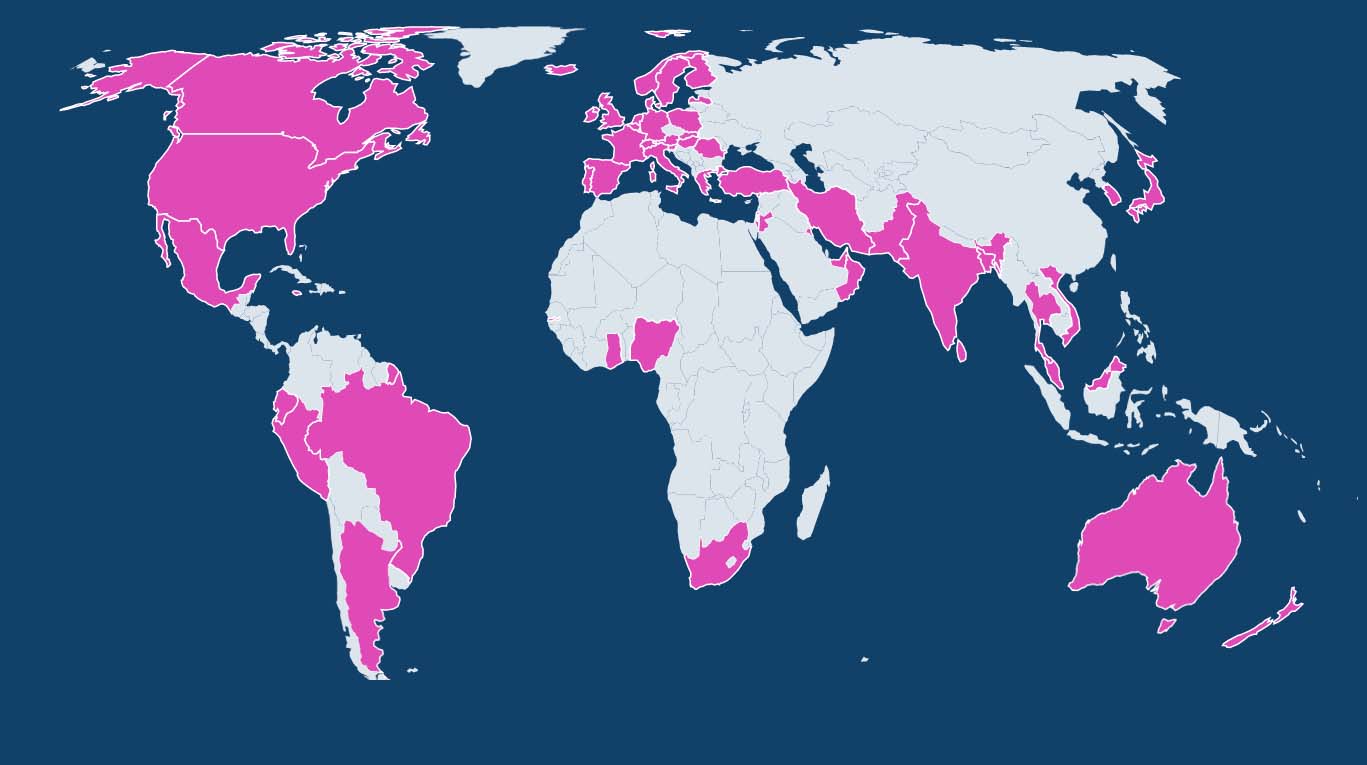The Center for Viral Systems Biology (CViSB) at Scripps Research is tracking the prevalence of new variants of SARS-CoV-2—the virus behind the COVID-19 pandemic—and making this information publicly available to drive global research efforts. The daily situation reports appear on Outbreak.info, a website created by the same team in early 2020, shortly after the emergence of COVID-19. The new reports add to the website’s rich data on the coronavirus, providing a standardized hub of information on viral mutations.
“For researchers to stay updated on information needed to fight the pandemic, it’s imperative that they have access to open source tools and the latest scientific data,” says Alaa Abdel Latif, research programmer on the CViSB team. “Especially now that several variants of the coronavirus are circulating in the United States, we saw the importance for a standardized hub of information about known mutations and any others that may surface.”
Demand for mutation data is high among health researchers, as some coronavirus variants in the U.S. have shown to be significantly more transmissible than others. This includes the B.1.1.7 variant first identified in the UK in early December 2020. According to a new study by Scripps Research and collaborators, this variant is expected to become the dominant form of the virus as early as March.
Initially, CViSB created the situation reports as a tracking tool to analyze the mutations found in their lab’s sequencing samples. The lab of Scripps Research Professor Kristian Andersen, PhD, who is also a director of CViSB, has been sequencing high volumes of virus samples from the San Diego area in partnership with other local teams—and notably, sequenced the first known B.1.1.7 variant in California.
“But given the growing concerns about emerging SARS-CoV-2 variants, we started applying it to analyze mutations found across the United States,” Latif says.
And though some of the data may be too sophisticated for a non-scientist to understand, the team expects that many members of the public will also find the dashboard a welcome resource for reliable, updated information.
The dashboard includes daily situation reports for mutations and lineages, which are series of mutations. Using data generated from the GISAID organization, which promotes rapid sharing of virus data, these reports track the number of sequences detected, locations where sequences have been detected, and prevalence over time at global, national and state levels. The dashboard also includes mutation maps for easy comparison between lineages.
“Thanks to global scientific efforts to sequence SARS-CoV-2, an unprecedented number of viral genomes are being produced and deposited to the GISAID database every day,” says Karthik Gangavarapu, a graduate student and computational scientist with CViSB. Gangavarapu says the situation reports are a natural extension of Outbreak.info, giving the world a way to track the virus and stay updated on changes as they occur—and giving researchers an edge in breaking ground in the COVID-19 pandemic.
The new SARS-CoV-2 Mutation Situation Reports and the Outbreak.info website are a result of efforts from the laboratories of Andersen, Andrew Su, PhD, and Chunlei Wu, PhD, with contributions from many other members of the CViSB team. Outbreak.info is supported by the National Institute for Allergy and Infectious Diseases, National Center for Data to Health and Centers for Disease Control and Prevention.

